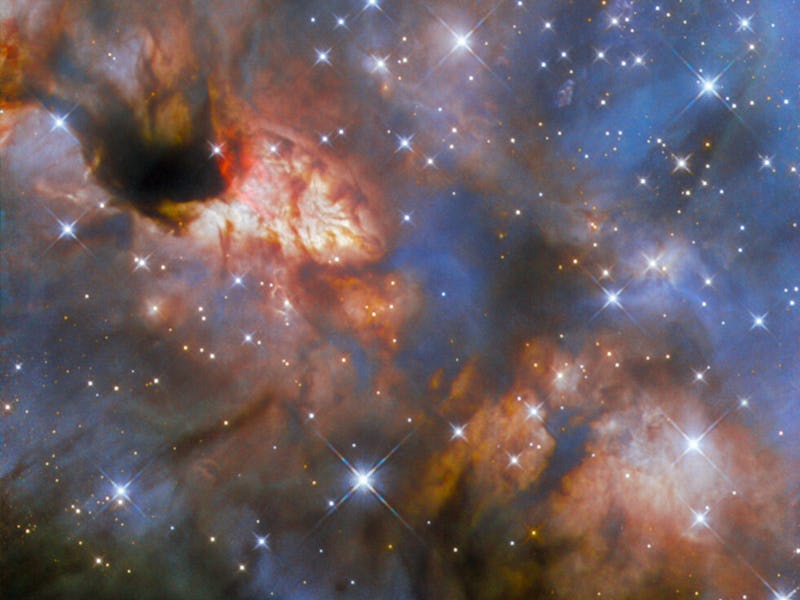An Oversized Baby Star Is Hiding In This Rare Hubble Space Telescope Snapshot
Space images are one part science, one part artistry.

A star, hiding in plain sight within a new image from the Hubble Space Telescope, is one big baby.
Stars fascinate astronomers. Not all of them are like our Sun, the 4.6-billion-year-old heart of the Solar System that has already reached middle age. Some, like the star at the center of a recently published image from NASA and the European Space Agency (ESA), are like rapidly growing teenagers. The star in the middle of the picture is a fraction of the Sun’s age, but already several times heftier. But studying it is tricky: Thick mats of stardust cover this jumbo-sized baby star.
That’s where Hubble comes in handy. Using its four imaging filters, Hubble took a snapshot of IRAS 16562-3959, a mysterious star-forming region in space. Despite being nearby, at about 5,900 light-years from Earth in the constellation Scorpius, IRAS 16562-3959 requires Hubble’s sensitivity to non-optical bands of the electromagnetic spectrum to reveal its billowing stellar cocoon.
The Milky Way star-forming region IRAS 16562-3959, located in the constellation Scorpius, about 5900 light-years from Earth.
“Multi-wavelength images including this incredible Hubble scene will help us gain a better understanding of how the most massive, brightest stars in our galaxy are born,” according to image descriptions from NASA and ESA.
Lurking behind a shroud of dust is a young star that has grown massive. Astronomers think it’s about 30 times the mass of the Sun. And it hasn’t stopped growing. The agencies write that the star “is still in the process of forming.”
By capturing this area in near-infrared light, just beyond the red part of the visible light spectrum, two vibrant regions on the upper left and lower right become clear. This is where a “powerful” jet from the young star has cleared dust away.
Space images are one part science, one part artistry. Hubble observations come back monochrome. That’s where specially-trained artists and image specialists enter, selecting colors to match the wavelength ranges from Hubble’s filters.
The result is an image brimming with beautiful colors and a special close-up of a massive protostar.